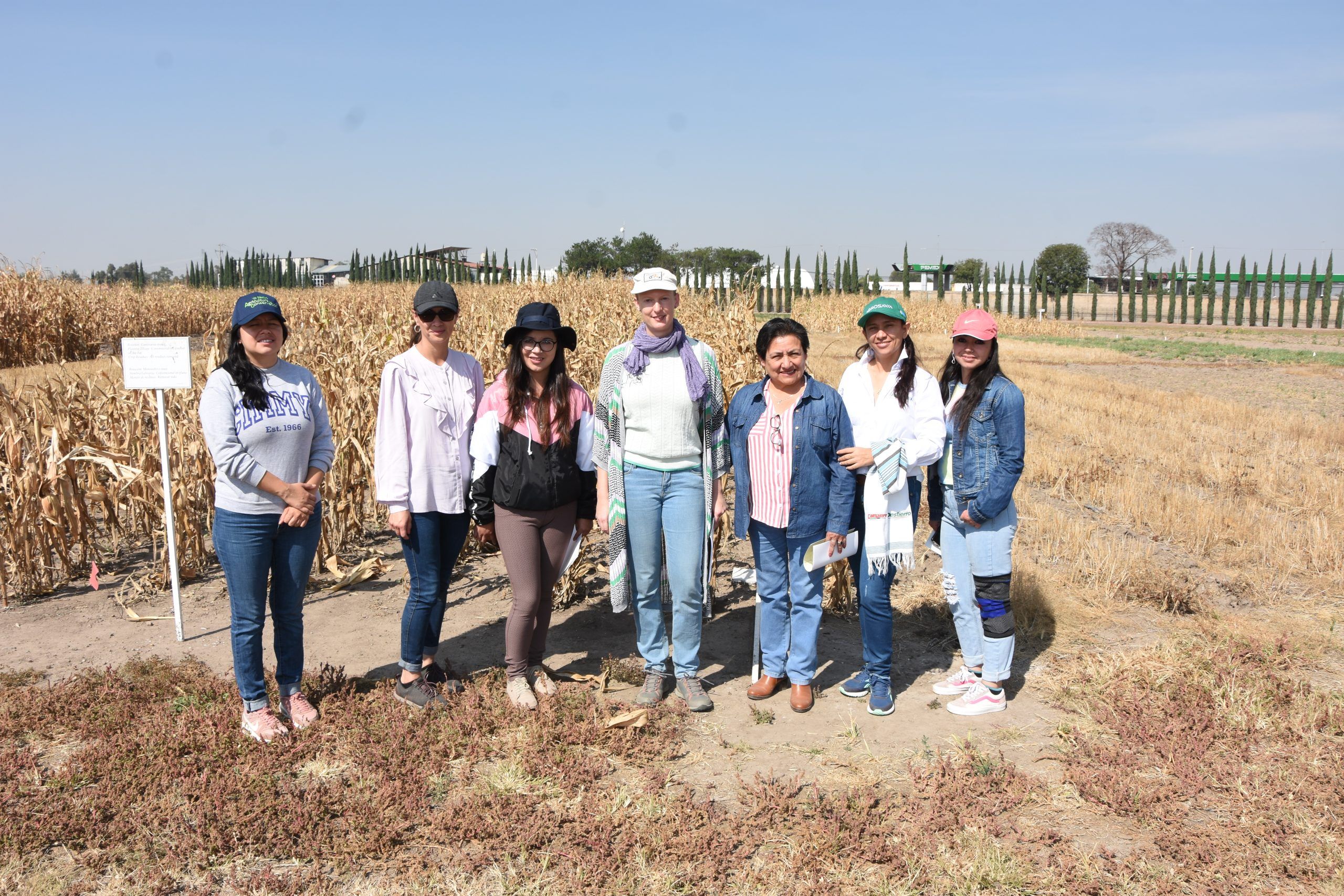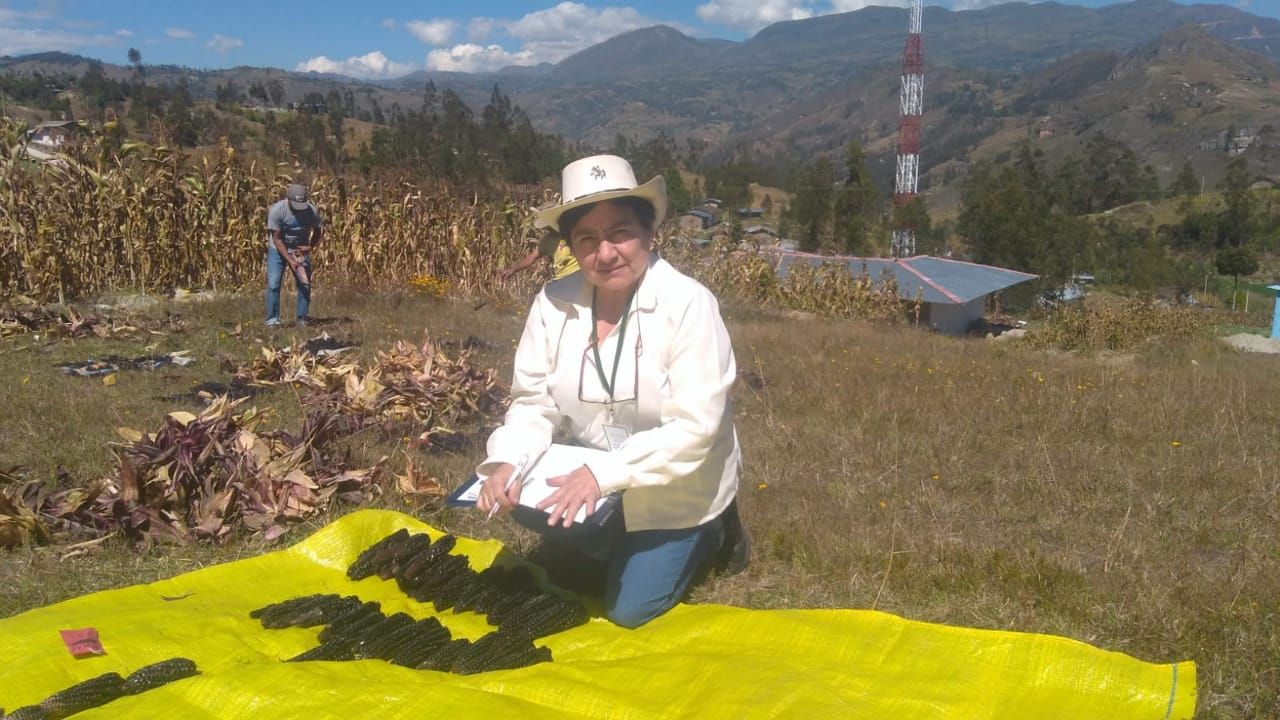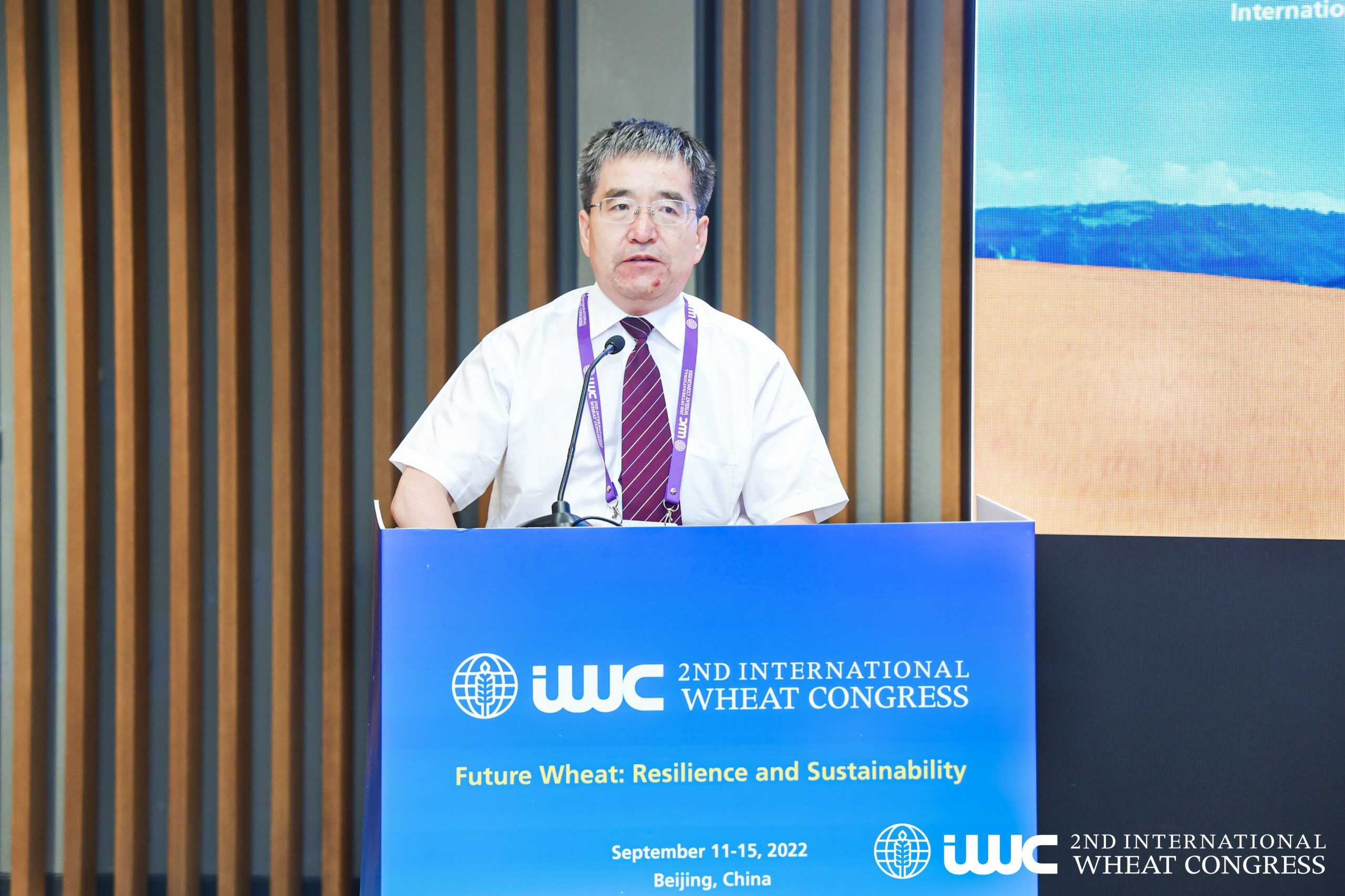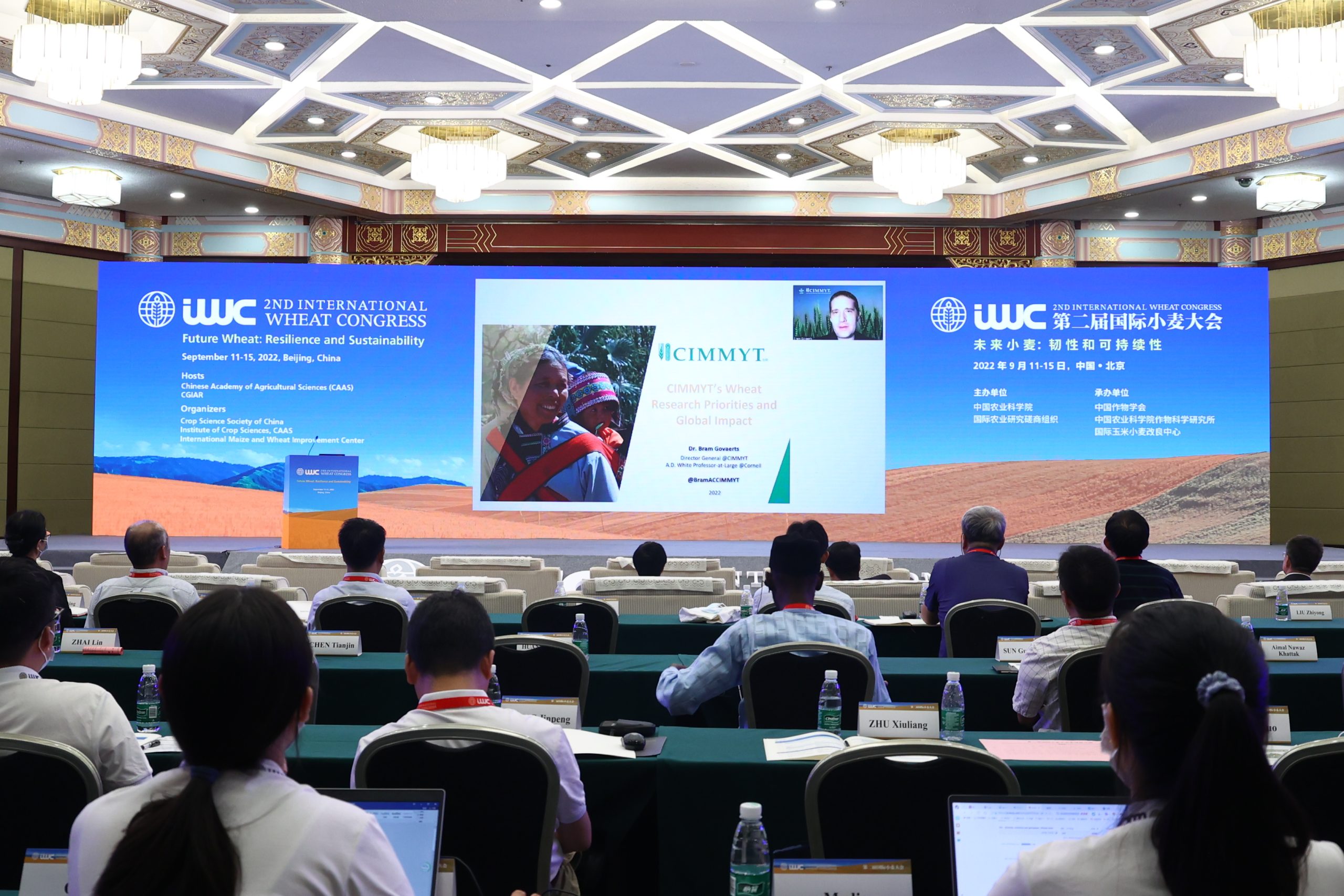Latin American female scientists collaborate on CIMMYT-supported TechMaiz project
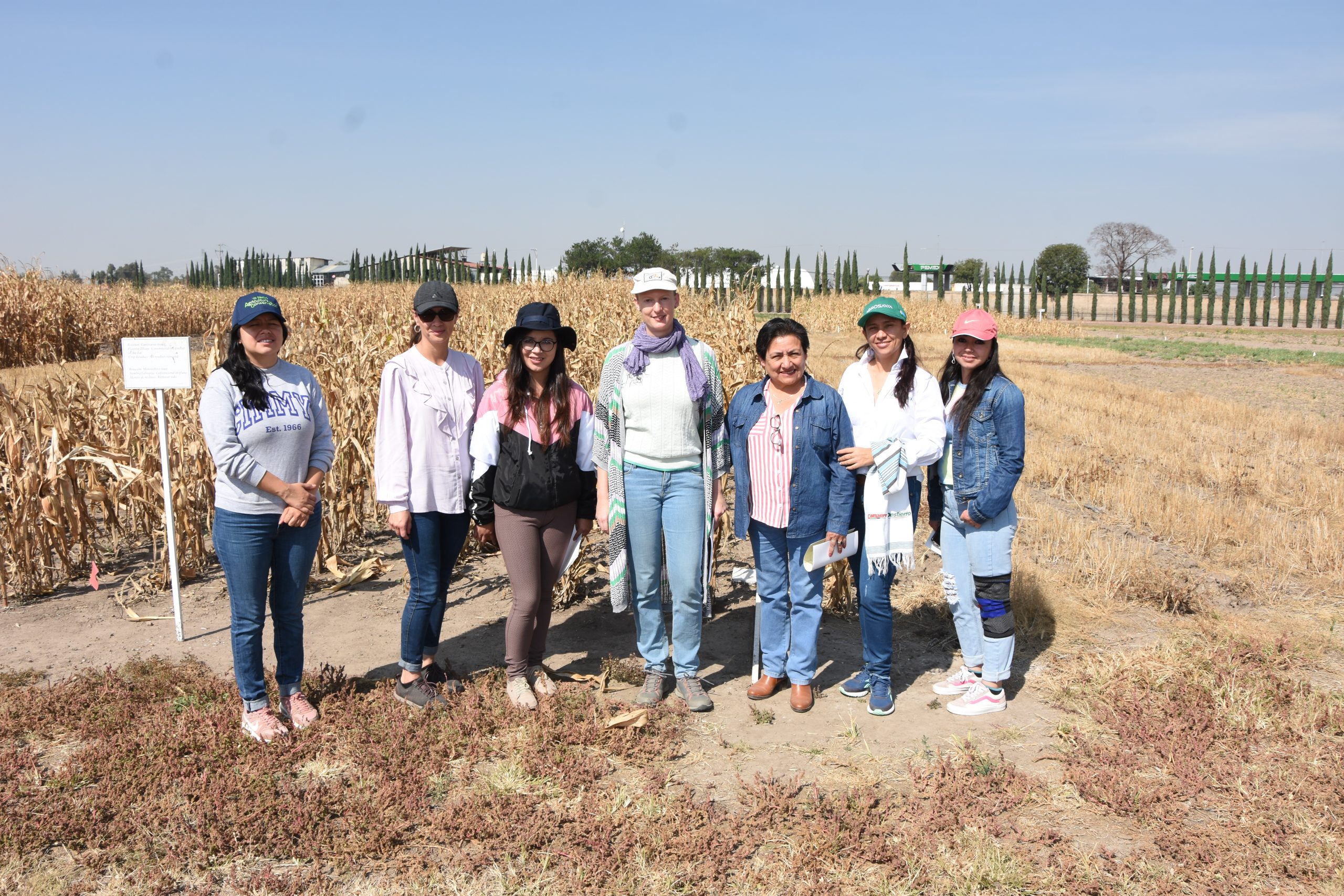
Female scientists from four different Latin American countries have come together to work on TechMaiz, a project supported by the International Maize and Wheat Improvement Center (CIMMYT), and continue the organization’s commitment to inclusivity and inclusion.
The scientists spent four days in November at CIMMYT’s headquarters in Mexico to contribute to the training plan, which focused on genetic improvement, soil conservation, seed storage, analysis of the nutritional quality of grain and innovation management in the hub model of maize cultivation.
This training allowed the researchers from Ecuador, Colombia, Guatemala and Peru to discuss the use of new technological tools for sustainable intensification of production systems of small and medium farmers, as well as the challenges on the road to moving from efficiency to resilience.
The scientists involved in this training within the framework of the TechMaiz project were:
- Liliana Atencio S. – A Colombian who works at the Colombian Agricultural Research Corporation (AGROSAVIA). She is an agricultural engineer with a master’s degree in agronomic science. This includes an emphasis on plant physiology and she has additional experience in transient and forage crop improvement programs.
- Ana Pincay – An Ecuadorian working at the Santa Catalina Experimental Station of the National Institute of Agricultural Research (INIAP) as an agricultural researcher. She’s also a biotechnology engineer.
- Alicia Medina – A Peruvian who is based at the National Institute of Agrarian Innovation (INIA) as a researcher. She is an agricultural engineer and has a master’s degree in development planning.
- María Gabriela Albán – She has several responsibilities, including co-investigator, coordinates the academic-financial part and is a professor of the agronomy engineering career at the San Francisco de Quito University (USFQ) in Ecuador. She is an agribusiness engineer with a master’s degree in agricultural sciences with an emphasis on agricultural business development. Albán also has a diploma in design, management, and evaluation of development projects.
- Karen Agreda – An agronomist engineer in agri-production systems. She has a postgraduate degree in alternative fruit and vegetable production and works as a specialized researcher in the validation and technology of transference program at the Institute of Agricultural Science and Technology (ICTA) in Guatemala.
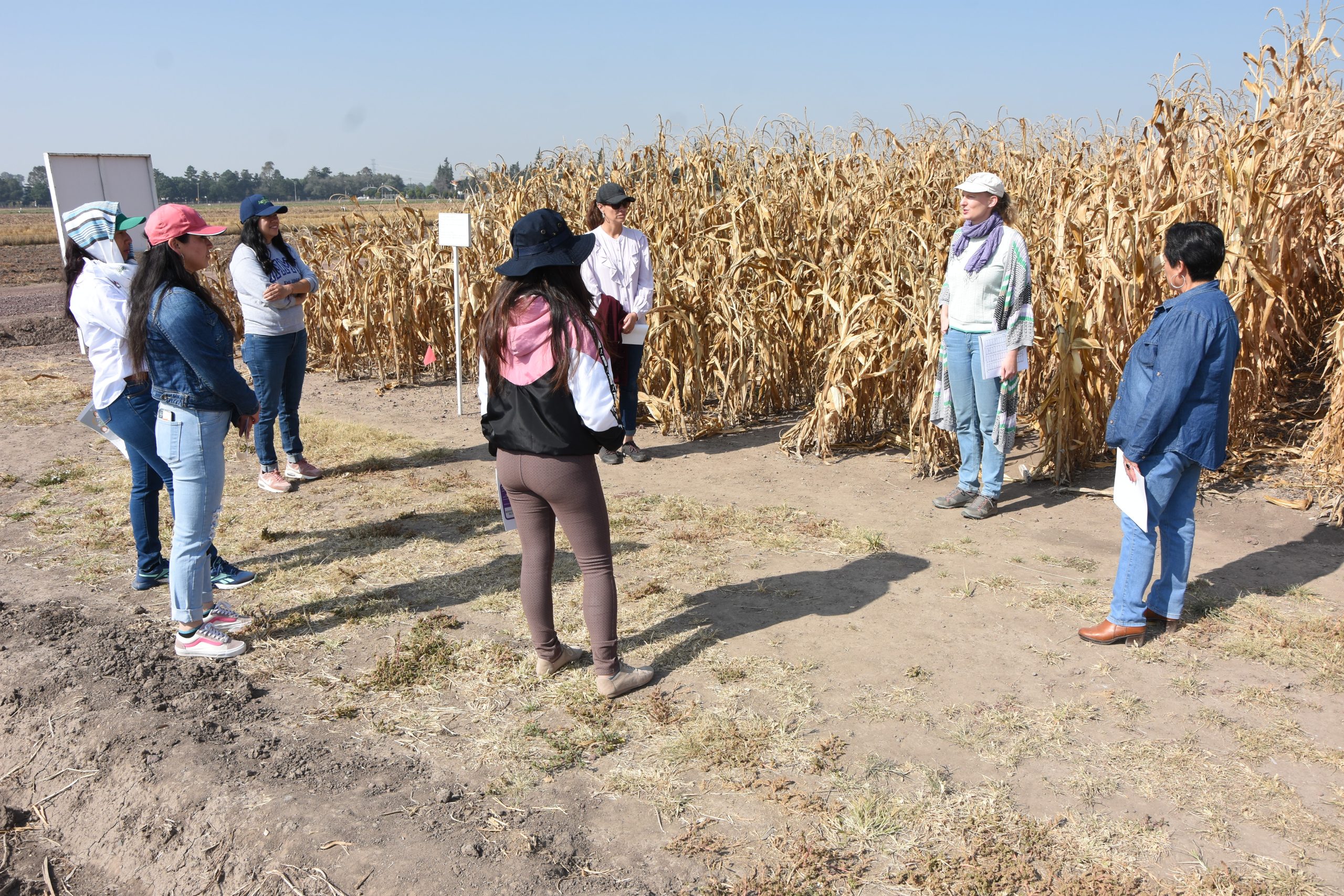
Weaving bonds of trust to generate changes
Following a period of continuous interaction, the researchers identified not only a number of shared challenges in their respective countries, but also how much complementary and concrete opportunities for teamwork are created when bonds of trust and teamwork are strengthened.
“In addition to strengthening knowledge, there’s also the relationship between researchers and institutions, understanding the role of each member of the team is important and allows us to make greater progress,” said Atencio. “For example, Alicia works on improvement, Ana on the use of bio-inputs, and Karen on transfers and linking. We all see that there are opportunities in agriculture for innovation by using tools such as e-agrology. The result of this is that generational change is becoming more and more urgent.”
Proposing more ambitious projects, but also clearer and more precise ones, is part of the learning the researchers plan to take with them. The scientists are determined to share this information with their teams and colleagues, along with integrative approaches that are designed to strengthen the human talent of each institution.
“In Ecuador, we practice the agriculture of conservation, but we didn’t know the concept of not removing the soil,” Picay said. “It is always a good decision to invest in training, as it refreshes the thought, opens the mind and triggers actions.”
The TechMaíz project will continue in 2023 with its third year of implementation, promoting national meetings to promote and disseminate the use of sustainable technologies for maize production. CIMMYT training for members of the Latin American Maize Network is also expected to continue.
